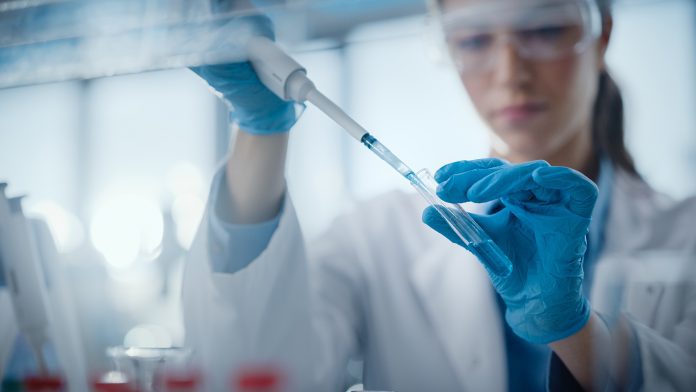
New brain tumour findings could lead to a new type of drug-containing nanoparticle that starves the tumour of energy.
Scientists from the University of Nottingham and Duke University have found that blood vessels that feed aggressive brain tumours have receptors that may lead to a new type of drug-containing nanoparticle that starves the tumours of energy they use to grow and spread.
The research is published in Pharmaceutics.
Expanding treatments for brain tumours
Gliomas are the most common primary brain tumours originating from the glial cells. They are a heterogenous spectrum, from slow-growing to highly-aggressive infiltrating tumours. Almost half of these brain tumours are classed as high-grade gliomas (HGG). Their highly aggressive nature means gliomas have a dismal prognosis, with an average survival of only 4.6 months without treatment and 14 months with optimal treatment.
The team examined tissue microarrays from intra- and inter-tumour regions of 36 adults and 133 paediatric patients to confirm Low-Density Lipoprotein (LDL) receptors (LDLR) as a therapeutic target. Expression levels in three representative cell line models were tested to confirm their future utility and to test LDLR-targeted nanoparticle uptake, retention, and cytotoxicity. The research showed widespread LDLR expression in adult and paediatric cohorts, and they categorised the intra-tumour variation observed between the core and either rim or invasive regions of adult High-Grade Gliomas.
Dr Ruman Rahman from the University of Nottingham’s School of Medicine led the study and said: “Brain tumours can be very hard to treat with the current techniques available, this is because many of the drugs or nanoparticles that have been shown to work in cells, when used in tests of clinical treatments cannot penetrate the blood-brain barrier that many tumours sit behind. So, we must look for new ways to treat them. These findings are a significant step in understanding the biology of tumours and how they gather energy to grow and spread from the body’s own fat and protein containing lipoprotein particles. The key now is to use drug and prodrug nanoparticles to target these receptors and cut off the energy supply of the cancer cells.”
Is an anti-parasitic medication the answer?
Niclosamide, an anti-parasitic application, has been used for over 60 years as an oral tablet. It kills tapeworms in contact with the gut by inhibiting their crucial metabolic pathway and shutting down their energy supply.
Research has shown that it can treat other conditions; for example, a nasal spray and an early treatment throat spray for COVID-19 and other respiratory viruses. Now, researchers are employing this technology to tackle brain tumours.
Professor Needham, who has been investigating this drug as a possible treatment for cancer for several years and has been driving research in this area and is a co-author on this study, said: “We know that niclosamide works by turning down the dimmer switch on host cells in the body, like in the nose as a preventative for COVID19 and other infections. Cancer’s have developed additional strategies to survive, and so has very different metabolic processes than normal cells. Niclosamide targets not only the energy production in the cells but also triggers other processes that result in what is called Apoptosis (self-killing) in the cells. And now we know that brain tumours have LDL receptors that we think are used to feed their growth and metastatic spread, we can work to modify the drug to target these and starve the cancer cells of their energy. Given that cancers feed on LDLS our strategy is to make the drug look like the cancer’s food.”
Professor Needham and the team at Duke have developed the “Bricks to Rocks Technology” (B2RT) that makes this common low solubility drug (commonly called “brick dust”) into even less soluble “rocks” for the expressed purpose of making pure prodrug nanoparticles. This technology allowed them to convert niclosamide into a new less soluble prodrug that allowed the formation of injectable or implantable nanoparticles.
Professor Needham continued: “This technology is now ready to be applied in other cancers, and Nottingham is ideally placed to develop this with the expertise at the Children’s Brain Tumour Research Centre. The next step will be to test the B2RT with Ruman and colleagues specifically in brain tumour cells and animal models, and if it shows promise, move it into patients as fast as feasibly and safely as possible. We want to determine if, and to what extent LDLR-targeted anti-cancer drug and prodrug nanoparticles can have activity in brain cancer, both injected intravenously and/or as post-surgical deposits.”









